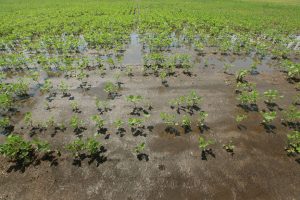 Droughts are expected to worsen and intense storms to become more frequent across much of the country in coming decades as the planet warms, but their impact on agriculture could be blunted if American farmers focus on their roots.
Droughts are expected to worsen and intense storms to become more frequent across much of the country in coming decades as the planet warms, but their impact on agriculture could be blunted if American farmers focus on their roots.
A new study, released Wednesday, examines the benefits of cover cropping—planting soil-enriching plants between crop cycles—and other soil-boosting practices used around the world, with a close look at Iowa, one of the Midwest’s top-producing agriculture states. The study determined that farmers could help their land better withstand some of the effects of a warming climate by making their soil more “spongy.”
“Spongy soil holds more water,” said Andrea Basche, the study’s author and a Kendall Science Fellow in the Union of Concerned Scientists Food and Environment Program. “What we found to be the most effective and consistent way to get more porous soil is keeping roots there.”
That certain practices help build soil health—including cover-cropping or “no-till,” in which farmers refrain from plowing soil—has long been understood in agriculture. But in the American Midwest, where corn and soybeans are the most widely grown crops, few farmers have embraced these practices. As little as 2 percent of growers in the Mississippi River basin plant cover crops, despite evidence suggesting they not only boost yields but also make soil more resilient to increasingly volatile weather.
Click here for the full story.
Originally published on the Inside Climate News Website.




